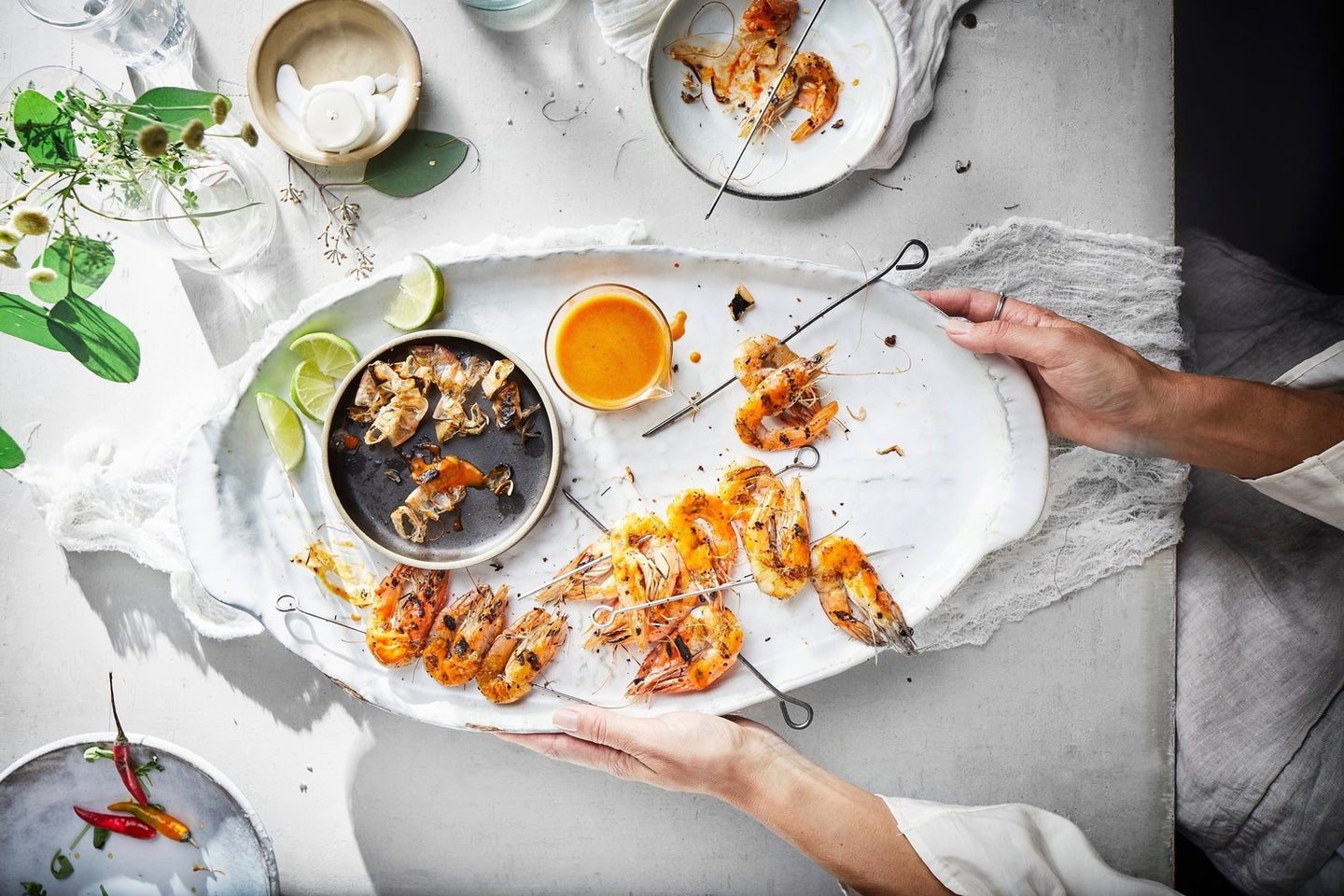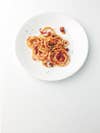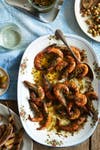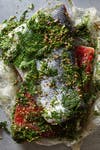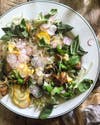5 Food Stylists Dish on How to Get the Perfect Instagrammable Plate
Their tried-and-true tricks revealed.
Updated Oct 11, 2018 7:14 PM
We may earn revenue from the products available on this page and participate in affiliate programs.
Summer calls for intimate dinner parties and endless evenings of entertaining. And while you may have it all down pat on the culinary front, the presentation can present a fresh set of problems. After all, first impressions are crucial and even more essential when it comes to food.
Think about it: You spend hours in the kitchen whipping up your classic crowd-pleaser only to relegate it to a basic serving bowl, garnishing it with whatever else you have on hand. We’re here to change that—mostly because your hard work deserves to look its absolute best.
Enter food stylists. They are the creatives who produce the drool-worthy imagery you come across in your favorite cooking magazine or on your Pinterest feed. Naturally, their advice and insight on proper culinary presentation is invaluable. So we tapped a talented few for their tried-and-true tricks for making the most of the dishes you’ll be serving at your next dinner party. Here’s what they had to say.
Do less
“Don’t try to tackle 10 different recipes for one dinner party,” advises food stylist Claudia Ficca. “Be mindful of the dishes you’re selecting and opt for simple recipes you can make ahead.” No one wants a host who is running around feverishly attempting to tackle last-minute tasks. Save yourself the hassle and stress and allow yourself the time to actually enjoy the dinner party.
The same rings true when it comes to plating. “Food needs room to breathe on a plate,” says Elle Simone, a food stylist at America’s Test Kitchen. Negative space allows the meal to remain more of a focus, but it prevents it from becoming an indistinguishable blob in a bowl.
“Over-abundant plating makes me feel stuffed and claustrophobic,” says stylist Heidi Robb. “It’s a relief to give one’s eyes a place to rest or to see an errant spice, herb, or pooling of juices.”
Choose the right plates
When it comes to plating the main course, food stylist Melina Hammer of Catbird Cottage likes to incorporate one-of-a-kind ceramics or relic-like surfaces to present the food in a striking fashion. “I look for simplicity and well-loved pieces that show wear (think glaze crazing, cut lines, and tea stains), which makes for a great blank canvas.”
Simone’s tried-and-true hack for choosing the perfect plate is all about making sure that the vessel isn’t the same color or shape as the food—unless, of course, you’re going for the whole monochromatic look—in an effort to prevent the dish from outshining the food.
“Bigger is not always better,” adds Robb. The food stylist abides by Scandi-inspired tones such as whites and neutrals, manifested in round shapes with organically soft edges.
“It’s nice to give the food some space and use smaller side plates for garnish or extra pinch bowls for a sauce,” food photographers Chris Sue-Chu and Alyssa Wodabek advise. “That way you can create some more interest in composition instead of piling everything on one plate.”
Integrate color and texture for personality
Pasta, chicken and rice, and your average lineup of soups all have one thing in common: They can satisfy you to your core but visually, their beige-ness leaves a lot to be desired. This is where garnishes can be the hero.
Herbs are a foolproof addition to any dish—their bright hues always offer up a pleasant hint of contrast to a spread. “Fresh herb garnishes scattered around can really save the day,” says Hammer, “or a colorful hit of finely sliced fresh red chiles or radishes.”
Simone suggests pairing a recipe with a side salad or veggies (think beets and carrots) to incorporate a splash of saturated color. If you’re tapped out on the garnish front, employ the use of patterned or colorful plates to add a visual element of interest.
When it comes to playing up a monochrome theme or elevating similarly toned dishes, Robb opts to complement the dish with textured accents such as shaved celery root, fennel slaw, and a drizzle of olive oil paired with coarse salt.
Garnish with intention
The novice will drop a sprig of rosemary on a dish and call it a day. But you’re better than that. As a general rule of thumb, avoid garnishing a dish with an herb or ingredient that wasn’t used in the recipe.
“I don’t want to see a sprig of rosemary sticking out of the middle of a chicken breast that’s barbecued,” says Simone. “If you didn’t use it in the recipe, it shouldn’t be on the plate.”
Robb is a big fan of adding on any small component that will visually help one “taste” the dish. Think freshly grated cheese, coarsely ground pepper or spices, slivers of chiles, droplets of oil, crumbs—you get the picture.
Use tweezers to get the job done
Ficca swears by her mandoline, “It’s simple to use and you can slice up any garnish really quickly. That and a good knife definitely makes life easier.”
Tweezers are yet another pro mainstay. “I have about seven pairs, all with different heads, which serve different purposes,” says Simone. Snag a pair if you’re the meticulous type when it comes to plating your dishes. They’re perfect for making fine adjustments and really come in handy for decorating cakes.
Serve cake sliced, not whole
Speaking of cakes—they’re exciting. Dessert is exciting. A monochrome, frosted dome sitting on a basic stand, not so much. Ficca suggests slicing a plain cake before serving, topping it with cream and strawberries—or any other topping that will be fitting of the base flavor—to add contrast and depth to the plate. This, in turn, will make the overall product a bit more enticing.
“Channel your inner creativity and do what works best for your space,” says Ficca. At the end of the day, it’s all about having fun and sharing a good meal with close friends and fam.
